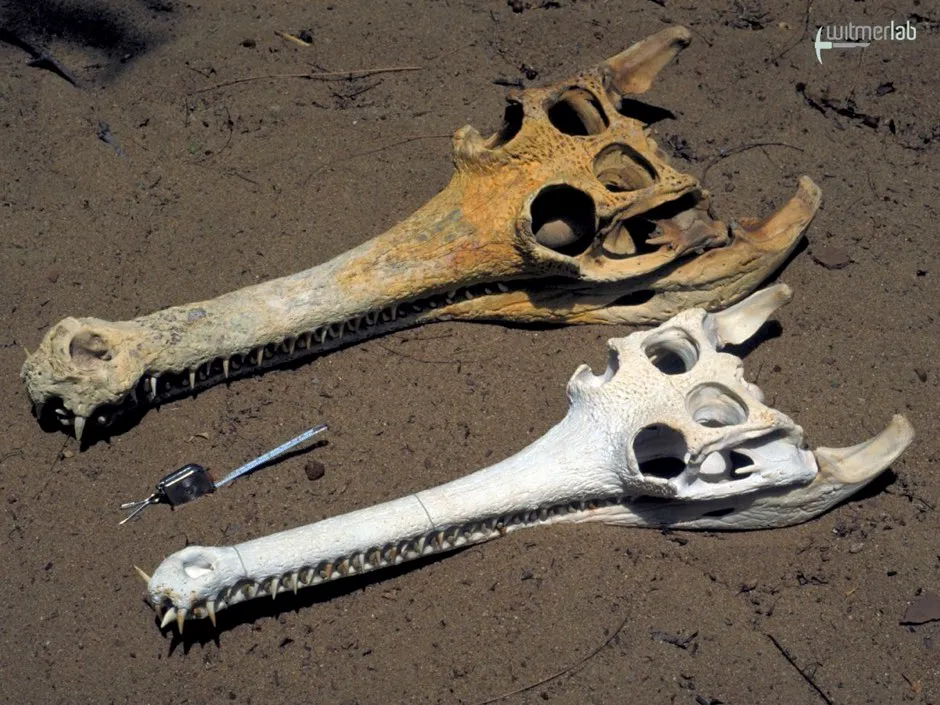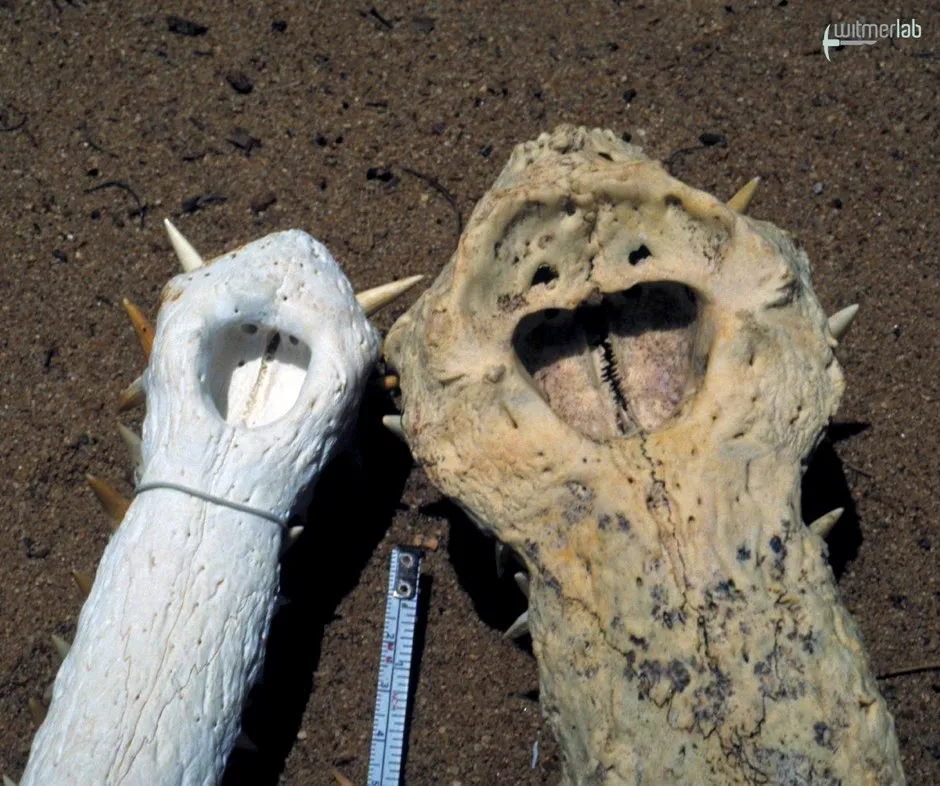Male dinosaurs may have looked slightly different from their female counterparts but these differences are difficult to spot in bone fossils, scientists have said.
This trait, where two sexes of the same species have different characteristics, is known as sexual dimorphism and can be seen in many species, such as peacocks or deer.
Scientists believe dinosaurs also exhibit differences between the sexes but say their new research shows it is far too difficult to tell from the skeleton alone.
An international team of scientists, which included researchers from Queen Mary University of London, examined skulls from modern-day gharials, an endangered giant crocodile species, to see how easy it is to distinguish between males and females using only fossil records.
Dr David Hone, a senior lecturer in zoology at Queen Mary University of London and one of the authors on the study, said: “Like dinosaurs, gharials are large, slow-growing reptiles that lay eggs, which makes them a good model for studying extinct dinosaur species.”
Read the latest dinosaur discoveries:
- 'River monster' first-known dinosaur to have lived in water
- Before it was a desert, the Sahara was a deadly dinosaur feeding ground
- Dinosaurs’ flying relatives could hold clues to building better drones
Male gharials are larger than females and have a fleshy growth on the end of their snout, known as a ghara, which is held in place by a bony hollow near the nostrils, known as the narial fossa.
Based on an analysis of 106 gharial specimens, the researchers found that aside from the presence of the narial fossa in males, it was hard to distinguish between males and females.

Dr Hone said: “Our research shows that even with prior knowledge of the sex of the specimen, it can still be difficult to tell male and female gharials apart.
“With most dinosaurs we don’t have anywhere near that size of the data set used for this study, and we don’t know the sex of the animals, so we’d expect this task to be much harder.”
Dr Hone said that unless the differences between the dinosaurs are really striking, or there is a clear feature like the narial fossa, “we will struggle to tell a male and female dinosaur apart using our existing dinosaur skeletons”.

The scientists say their work, published in the journal PeerJ, also challenges previous research that female T. rexes were bigger than males.
Dr Hone said the scientific paper on T. rex published many years ago was “based on records from 25 broken specimens and our results show this level of data just isn’t good enough to be able to make this conclusion”.
Reader Q&A: How do dinosaur footprints get fossilised?
Asked by: Rob French, Sheffield
In 2018, over 80 dinosaur footprints were revealed at a site in East Sussex. They had survived for over 100 million years – and bear witness to the huge amount of luck involved in creating such fossils.
First, the creatures must step through sediment that is pliable enough to record their footprints, but not so pliable it gets washed away before being protected by fresh sediment. Each footprint then has three chances to become a fossil: as the original impression (the ‘true track’), as its fainter impression in the underlying layers (the ‘undertrack’), or by new sediment filling in the original impression (the ‘natural cast’) and hardening.
Either way, as the layers of sediment build up, the pressure turns them to rock which – given yet more luck – will preserve the print intact for aeons.
Read more:
